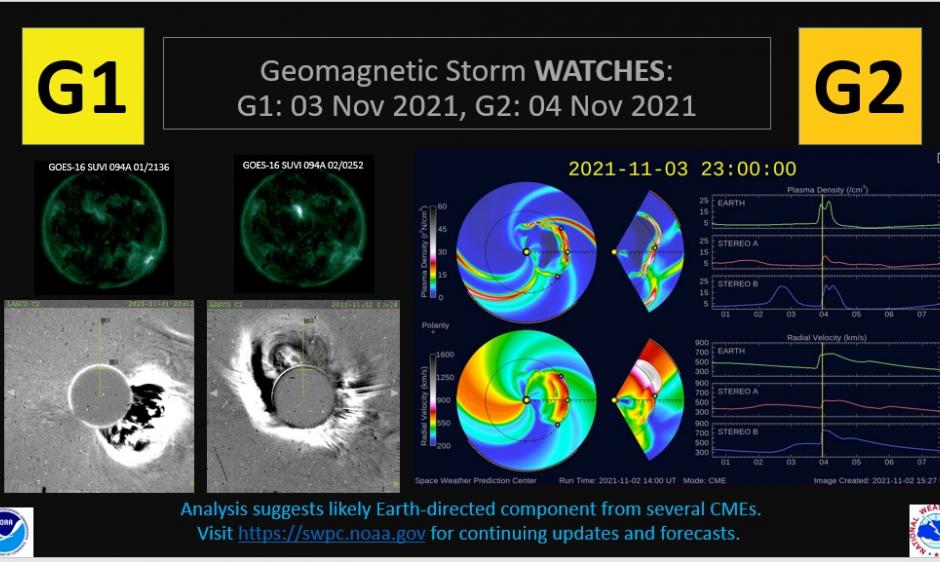
**(UPDATE):The G1 (Minor) Geomagnetic Storm Watch for 04 Nov has been upgraded to a G2 (Moderate) Geomagnetic Storm Watch. The G1 (Minor) Geomagnetic Storm Watch for 03 November remains in effect.**
Several CMEs (coronal mass ejections) erupted from the Sun on 01 - 02 Nov and analysis and model consensus indicate likely Earth-directed components to a few of them. CMEs took place from the southwest area of the Sun to include one associated with a C4 flare from NOAA/SWPC Region 2887 at 01/2133 UTC (02/1:33am EDT). This was followed by a full halo CME related to an M1 flare (R1-Minor Radio Blackout) from Region 2891 at 02/0301 UTC (02/7:01am EDT) near center disk. Confidence in a measure of Earth-directed components to these CMEs is moderate; while there is less confidence in timing and intensity. Please continue to visit https://swpc.noaa.gov for the latest information and forecasts.